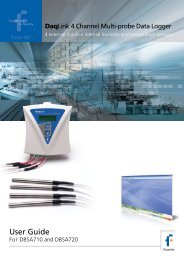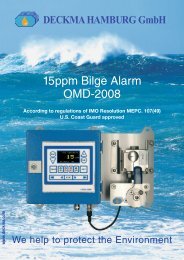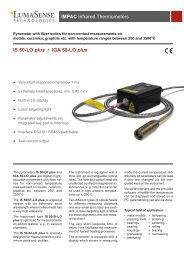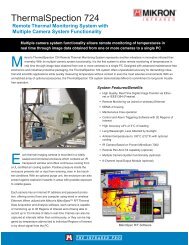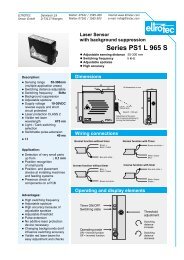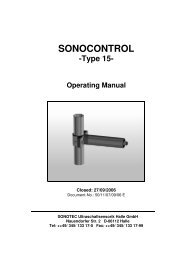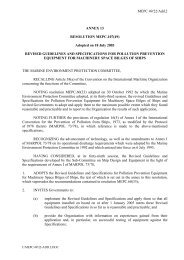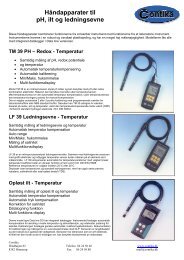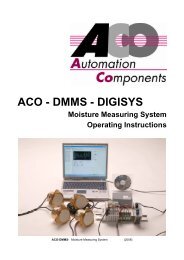Pyrometer- Handbook - Contika
Pyrometer- Handbook - Contika
Pyrometer- Handbook - Contika
You also want an ePaper? Increase the reach of your titles
YUMPU automatically turns print PDFs into web optimized ePapers that Google loves.
Window Materials<br />
<strong>Pyrometer</strong>s permit non-contact measurement of<br />
temperatures of materials in furnaces, vacuum chambers or<br />
other enclosed areas. Of course, one needs a special<br />
opening through which the pyrometer can "see" the surface<br />
of the object to be measured. In many cases these openings<br />
must be closed off by windows (for instance, in a vacuum,<br />
when under pressure, when dealing with gases, liquids or<br />
viscous masses). Depending on the temperature range and<br />
the spectral range of the pyrometer, the correct choice of<br />
window material is essential. Table 2 (see page 63) gives a<br />
general picture of the most commonly used materials and<br />
their technical data. The transmission range must be<br />
chosen so that it will not conflict with the pyrometer's<br />
spectral range, which is determined by temperature and the<br />
material of the object to be measured.<br />
Among other necessary properties are mechanical<br />
strength, moisture & chemical resistance, and the ability to<br />
withstand thermal shocks.<br />
The minimum thickness of the window (d min) to ensure<br />
stability under pressure is calculated with the formula:<br />
d min = r .<br />
r - radius of the window<br />
S - safety factor (≥ 4)<br />
c - method of window attachment<br />
(for instance c=1.1 for loose attachment)<br />
∆p - Differential pressure<br />
Μ r - Break modulus (material constant, see table 2)<br />
Glass and quartz windows (used for high temperatures) are<br />
cost efficient, as are silicon and fluor- spar windows (to<br />
measure lower temperatures).<br />
<strong>Pyrometer</strong> <strong>Handbook</strong><br />
S . c . ∆p<br />
Μ r<br />
spectral range<br />
mechanical stability<br />
49



